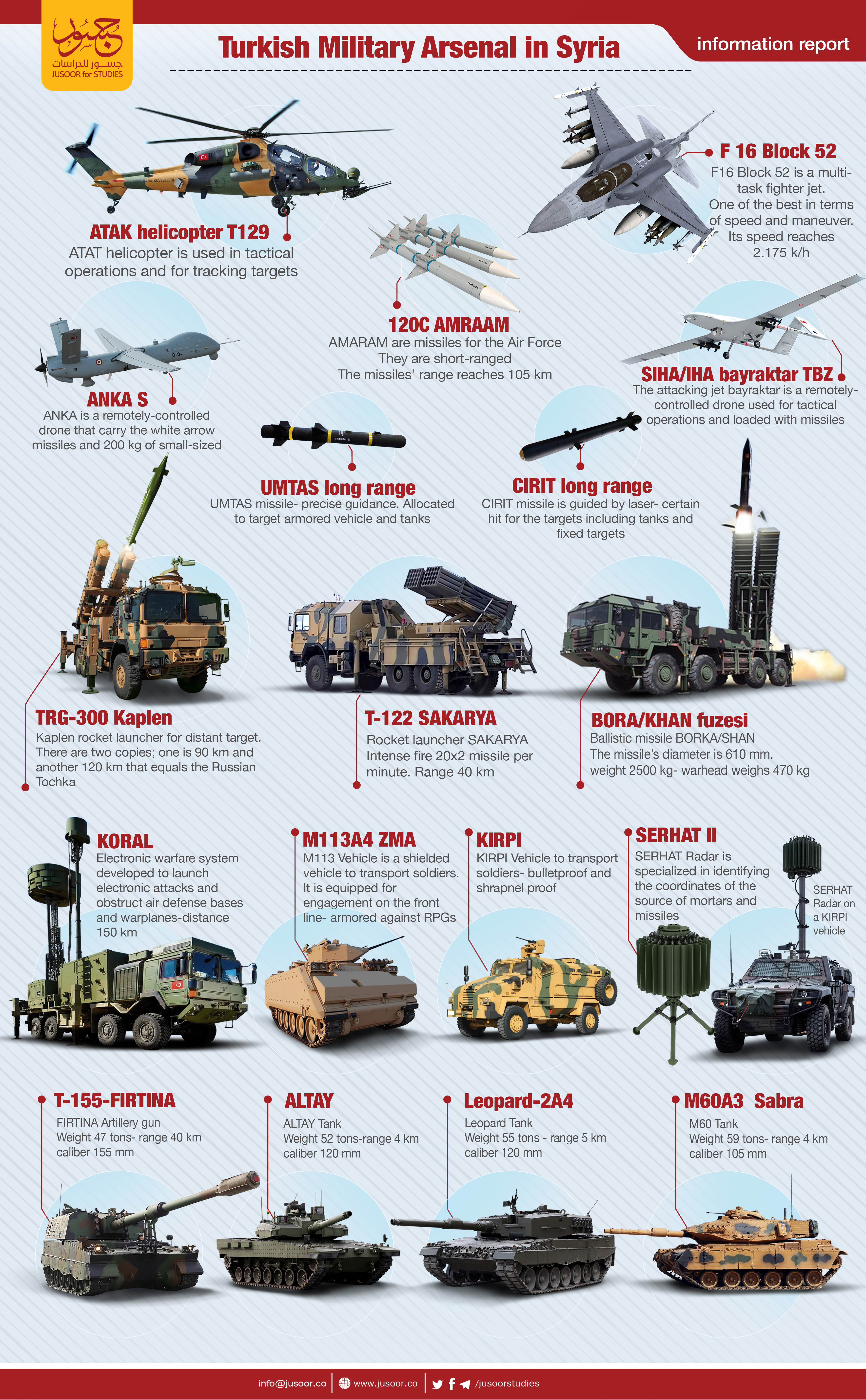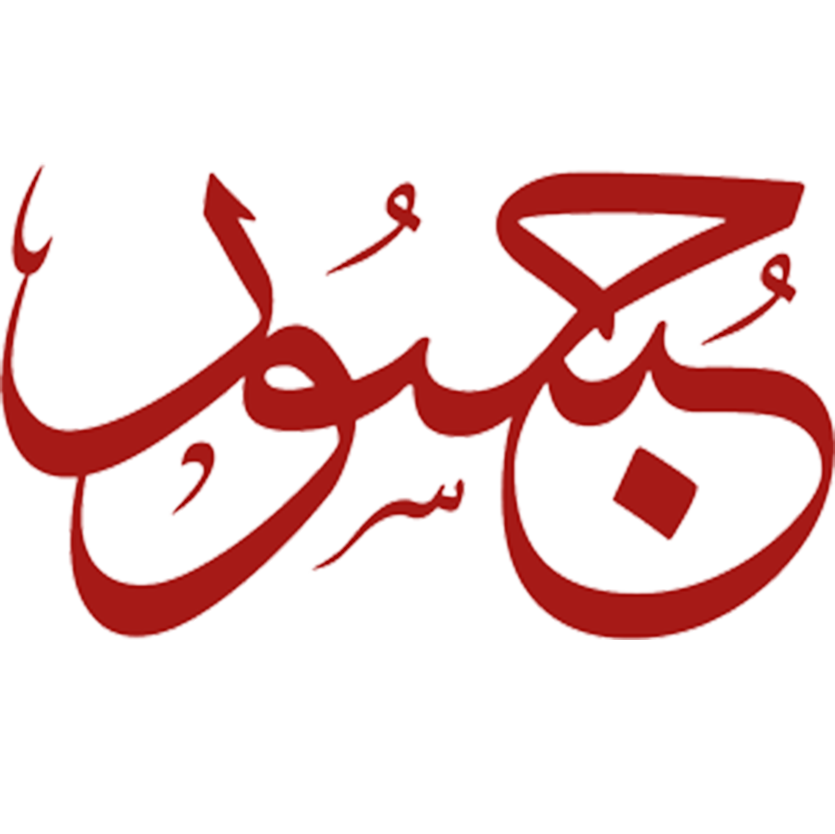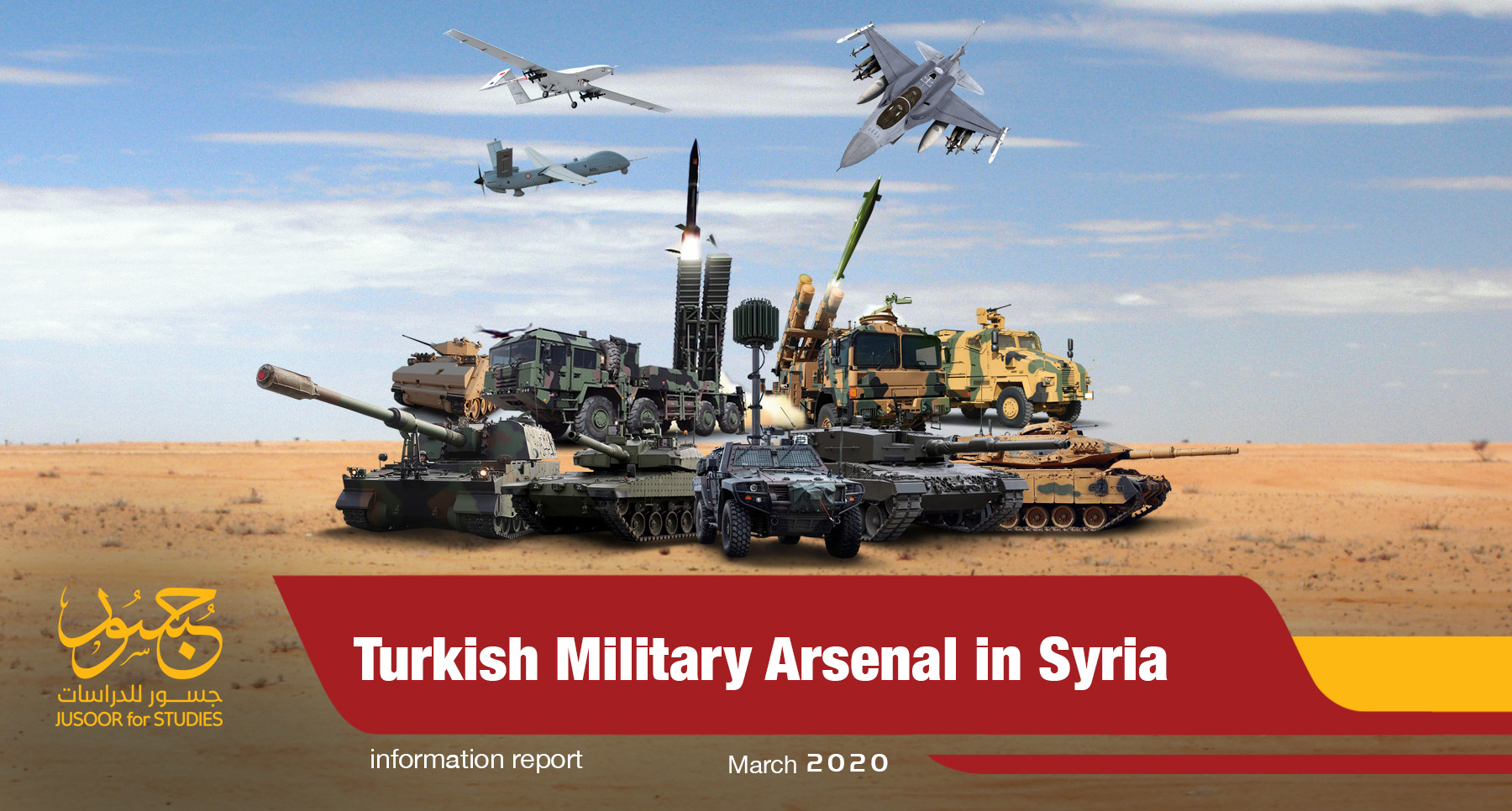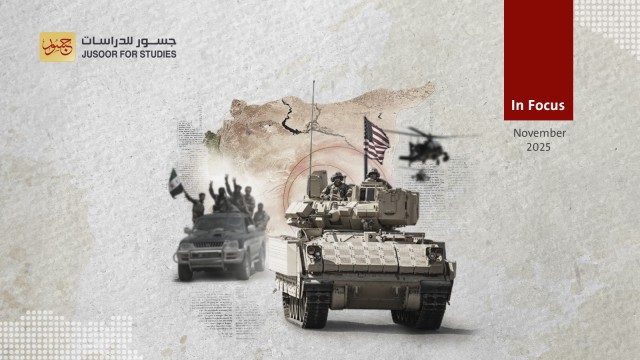Turkish Military Arsenal in syria
Introduction
In late January, shortly after the Syrian regime forces gained control over the city of Maaret al-Numan in south Idlib, with Russian air and ground support, the Turkish army began an unprecedented reinforcement of its military presence in northwestern Syria. Turkey has sent thousands of troops into Syrian territory including special and commando forces, the elite of the Turkish armed forces, backed by tanks, armored vehicles, artillery and missile units.
Today, the Turkish forces deployed within the fourth de-escalation zone number between 8,000 and 10,000 soldiers. In terms of eastern armies, these forces are the equivalent to or exceed two armored brigades in addition to a special forces regiment.
First: Equipment used in Syria
The Turkish army brought several tanks and armored vehicles into Syria as part of its reinforcements. These were accompanied by assorted armored arsenal including the German Leopard 2 tanks A4 version, the Turkish M60 Sabra tanks, and the advanced Turkish Altai tanks. In addition to these, the Turkish forces introduced the American M113 armored personal carrier, small Humvee vehicles and Kirby Humvees with armored wheels.
The Turkish forces also brought assorted equipment into Syria including SERHAT type ground radars, Cobra communication vehicles, Thompson mine clearance vehicles, Stinger air defense vehicles mounted on M113 carriers, medium Bora missiles, and anti-armor missiles with night-vision lenses.
The Turkish army recently deployed Caserga 300 surface-to-surface missile systems, characterized by a range of 80 and 100 km, in Syria with the intention of penetrating fortifications and military locations. The missile’s range of destruction is up to 70 meters in diameter.
Taftanaz Airbase in northeastern Idlib is considered one of the most important bases providing support for ground operations in northern and eastern Idlib and southern Aleppo. Nine T-155 Firtina, self-propelled howitzers of 155 caliber, are stationed at the airbase in addition to an armored company.
Since February 22, 2019, Turkish ground forces in Syria have been supported by unmanned TB2 drones that can fly for 24 hours continuously and carry nearly 100 Kilograms. Phoenix aircrafts have also been providing support and these can carry up to 200 Kilograms in ammunitions.
These drones have carried out more than 300 raids over the past two weeks, targeting the supply routes used by the Syrian regime forces, and the regime’s main operational rooms and military bases in the area.
In the beginning of March 2020, Turkish fighter jets began carrying out specific strikes against Syrian regime aircrafts and some of its bases. The strikes resulted in the shooting down of two Su24 planes on March 1st and al-Nayrab military airport in Aleppo countryside going out of service.
With the multi-functional F16 aircraft, the Turkish Air Force can provide aerial coverage for its ground forces and protect them from enemy aircrafts for up to 110 Km. This is due to the F16’s ability to carry AIM-120C-7 AMRAAM missiles specifically designed for aerial targeting.
The F16 aircrafts can also strike ground targets accurately from a distance of up to 250 Km using AGM-84H/K SLAM-ER missiles which target both fixed and mobile targets. In addition, these aircrafts can guide missiles after launch using GPS.
Turkish aircrafts can neutralize hostile air defense systems over a range of 106 Km by targeting them with AGM-88 HARM missiles which are undetectable to radar systems.
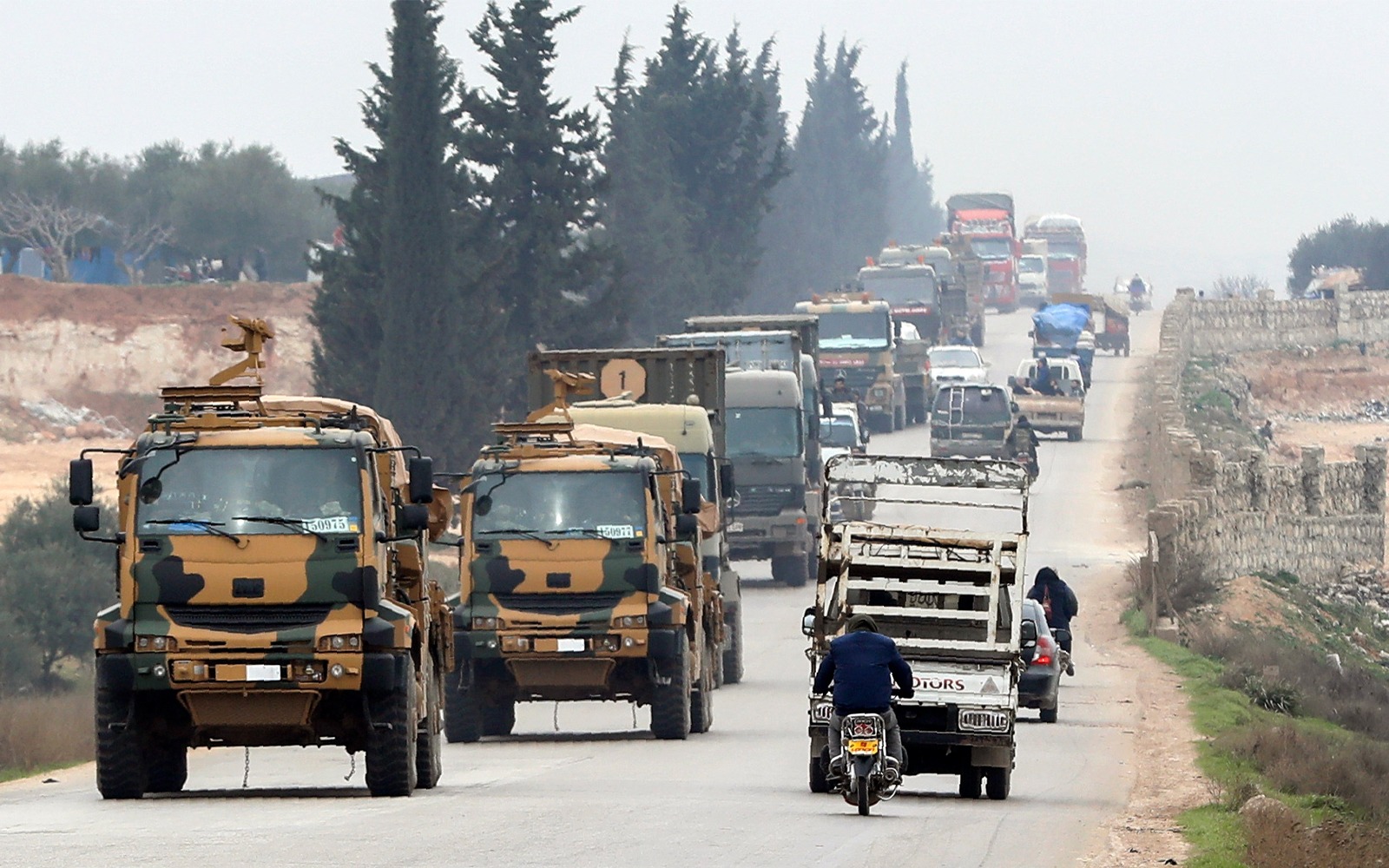
Second: The impact of the Intervention on the Military and Political Situation
The most recent Turkish position establishes a new stage for the Syrian issue as Turkey has moved from its role as a guarantor to a party in the fighting, as is the case with Russia. Moreover, the Turkish political and military leadership are now dealing with the Syrian regime as an enemy and a legitimate target as well as linking the Turkish military presence in Syrian territory to achieving a democratic state in Syria.
Recent developments make it clear that the latest Turkish military moves have succeeded in changing the field situation significantly. The Syrian opposition forces, with coverage from Turkish drones, managed to recover all the areas they lost control over in Jabal al-Zawiya in southern Idlib, more than 12 towns east of Idlib and many villages and towns northwest of Hama.
Despite the Russian Ministry of Defense’s announcement on March 1st that it is unable to ensure the safety of Turkish aircrafts in Syrian airspace, the Turkish Air Force continued to carry out targeted airstrikes. The airstrikes are expected to continue even if Russia decides to use the S400 or S300 missile systems that it oversees in Syria as these systems are mainly intended for use against ballistic missiles and warplanes while the Pansir 1 missile system has failed to stop the aircrafts. Due to its military capabilities, the Turkish Air Force continues to threaten the Syrian regime’s air force without even entering Syrian airspace.
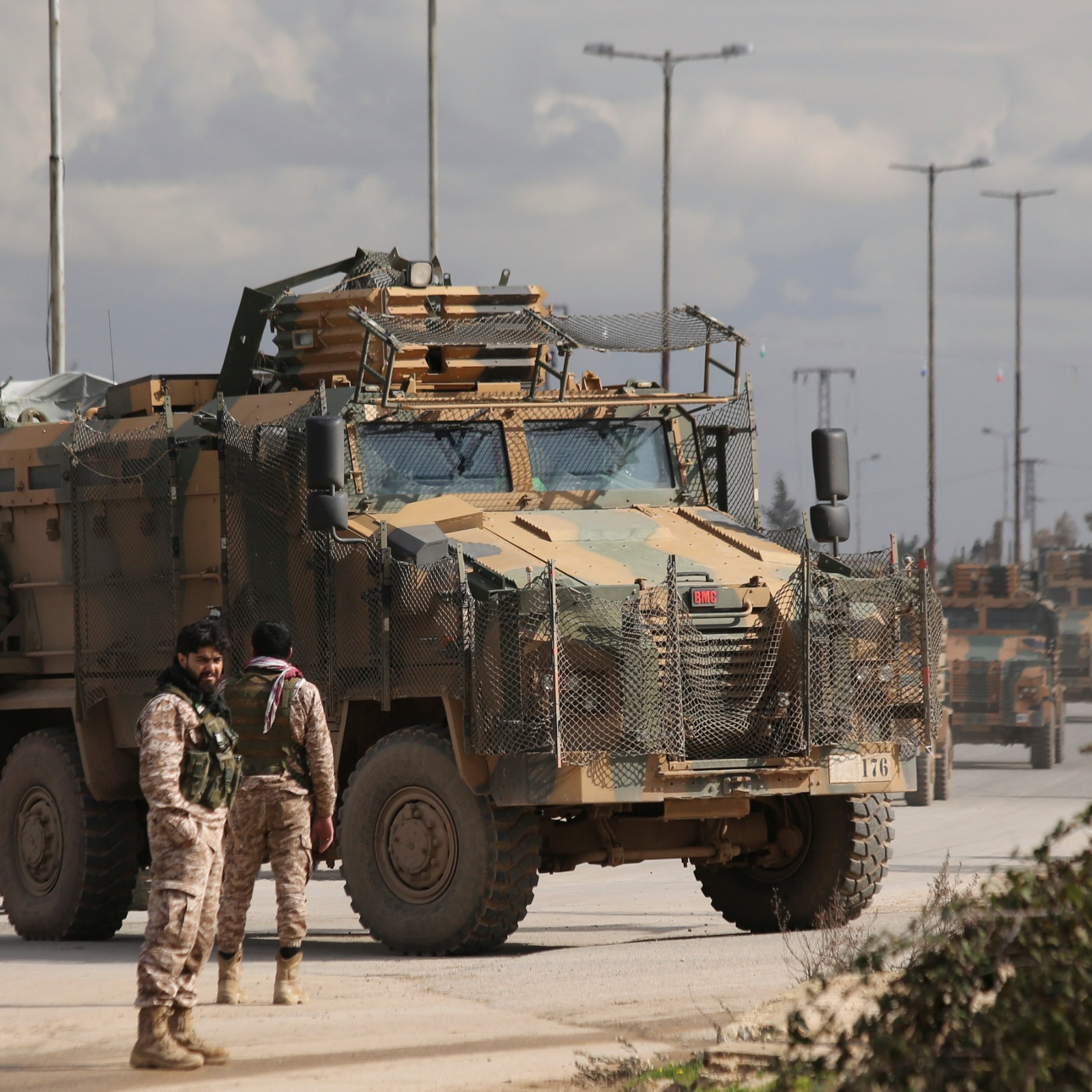
It appears that the current Turkish airstrikes have resulted in a state of attrition among the ranks of the Syrian regime’s ground forces. The strikes are a prelude to the Turkish ground forces’ operations which may be carried out in the event that a convincing understanding is not reached during the upcoming summit between Erdogan and Putin on March 5th.
There are many indications that Turkey and Russia want to avoid slipping into a confrontation in Idlib and its surroundings, which will give Turkey a greater margin for maneuver given that its war efforts will be directed against the Syrian regime only. This does not necessarily mean that Russia will allow the complete, or even partial, collapse of the Syrian regime forces, and it may reach a new settlement with Turkey in anticipation of such a scenario; however, this settlement will of course achieve a good margin for Turkey and for the Syrian Opposition secondarily.
